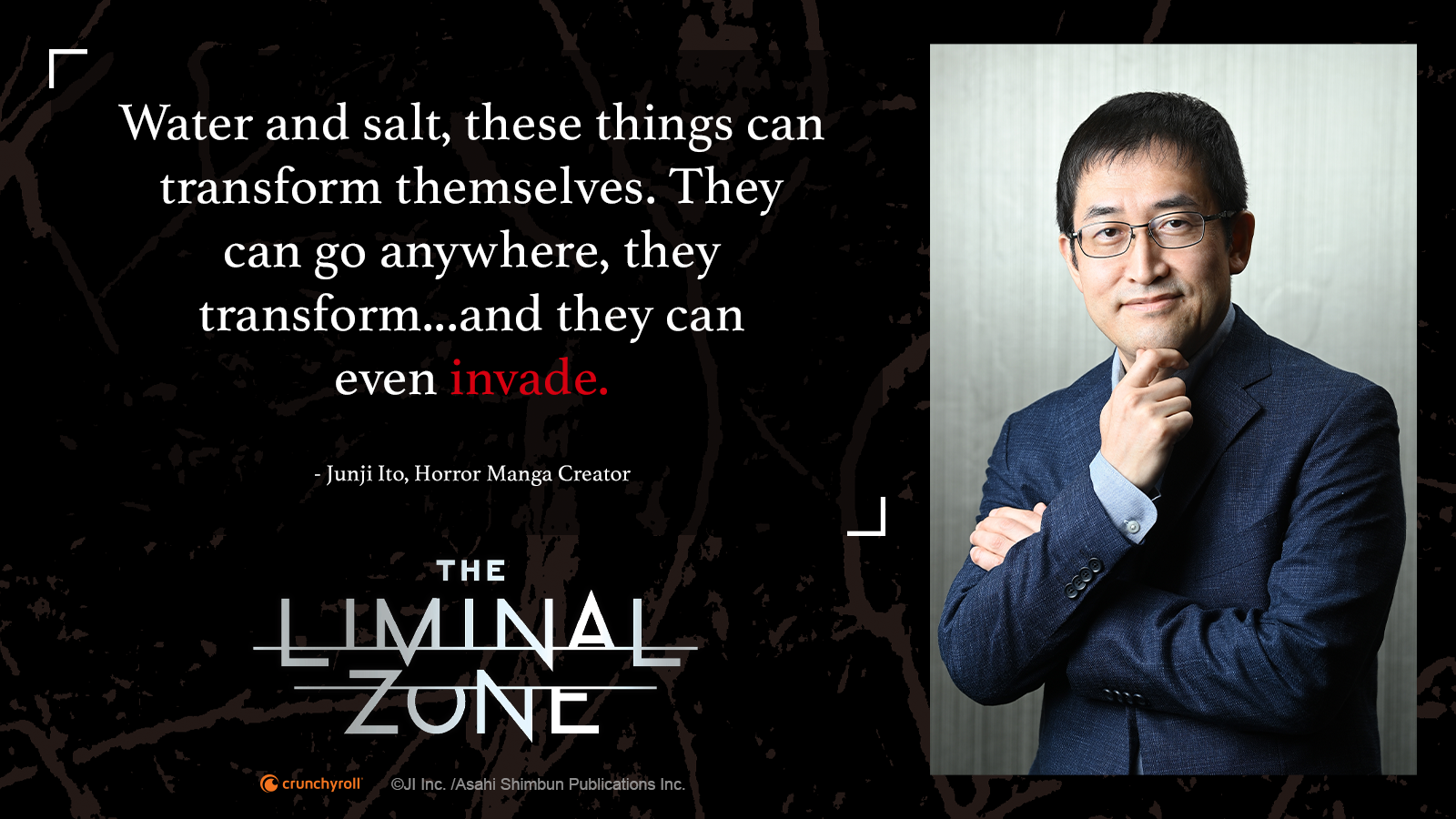
© Tetsuya Higashikawa / Asahi Shimbun Publications Inc.
In the public eye, horror master Junji Ito lurks in two conflicting spaces: On one hand, Ito’s a chilling storyteller whose tales have secured him four Eisner Awards, numerous anime adaptations including the forthcoming Uzumaki, and after countless pages spanning over 35 years, a reputation as the most renowned horror artist in manga. Yet to many fans’ bewilderment (and delight), Ito’s gruesome stories are a stark contrast to the artist’s own bubbly personality. Ito himself is a cheerful, humble, former dental technician who enjoys such hobbies as admiring cats, exploring haunted houses, and transforming into a VTuber.
Little surprise then that the Liminal Zone—Junji Ito’s latest anthology comprising four horror stories—often traps its characters in a space between spaces: From the limbo between waking and dreaming to bodies literally shifting shape and form, the Liminal Zone asks whether people can in fact occupy multiple spaces at once…with each story providing very different answers.
Just days after his 59th birthday, Junji Ito sat down with Crunchyroll to talk about the Liminal Zone, his latest Eisner win, and the conflict he feels between aging and the child artist that still dwells in his heart.
Spoiler warning: This interview contains spoiler content for the Liminal Zone.
Crunchyroll: Thanks for taking time out of your busy schedule. I'm excited to talk with you about the Liminal Zone!
ITO: Thank you so much for having me. I'm looking forward to speaking with you today.
Can you briefly introduce yourself for Crunchyroll readers?
ITO: Hello, my name is Junji Ito. I'm a horror manga artist. Recently I published a work called the Liminal Zone, and I hope you enjoy it.
Thank you. So first, what inspired you to call the anthology the Liminal Zone?
ITO: So when I was coming up with a name for this short story collection, for the front of the series, I wanted the titleNote 1 to be something new, something I haven't used .
And gen 幻 means "unreal," "imaginary," "magical." Kai 怪 means "ghost." I've never used this combination of words for a title so it sounded good, and chitai 地帯 is a "zone" or "area”...it sort of implies a place that's away from where people live, from civilization. And those are the stories that I focused on for this collection. So I thought that was a good combo.

Courtesy of VIZ Media ©JI Inc. /Asahi Shimbun Publications Inc.
In that case, does each story have a different "liminal zone"? Is there anything that ties the four stories together in your eyes?
ITO: Each story is on its own, and was inspired by different ideas, so in my mind they're totally unrelated, unconnected stories. However, looking back, each story is about a character or characters as sort of separated from people, separated from society. Especially with "Slumber": It talks about hikikomori or the withdrawn peopleNote 2, so in that way, the stories are somehow connected.
Speaking of people that are disconnected, there's a lot of change in these stories. All the stories focus on things that flow and change shape: tears, memories, salt, rivers. Is there anything about things changing shape with their container that appeals to you?
ITO: Until you pointed that out, I never really noticed that there's a connection of water or salt or something that flows and changes. But just like you said: Water and salt, these things can transform themselves. They can go anywhere, they transform…and they can even invade. They're in our bodies without us really knowing or being aware of it. And if you think of it that way, it gives you this sort of eerie feeling. And it's a great subject for horror stories.
In terms of water, Bruce Lee famously talked about how water can be still and strong. Flexibility is actually a strength of water. So in that way, I am attracted to that quality.
In that case, do you see a connection between physical flowing things like water and the way that you treat memory in “Slumber”?
ITO: [laughs] That's a really great question, and I never really thought of that. But, you know, in my mind memories are sort of the chemical reactions in your brain. And if you think of it that way, maybe there's a connection, but I've never thought of that...it's really hard to answer!

Courtesy of VIZ Media ©JI Inc. /Asahi Shimbun Publications Inc.
The Liminal Zone was the first time your stories were serialized in a digital manga reader rather than in a magazine. How did the lack of page limits affect how you wrote each story?
ITO: So if there's no page limitation, then I just continue writing and writing and it becomes really long. When I put them in magazines, there is a page limitation, and I have to fit my story within those limitations...so sometimes I would have to cut and delete stuff that I really wouldn't want to. So in that sense, with this series, I could just follow my instincts. I could do the layout just the way I wanted to do it, so in that way, it's very satisfying to be able to draw and write as much as I can.
With that said, if there's no limitation—if I don't have to cut—then it gets too long. Sometimes cutting it and deleting the story makes the tempo of the story better, or improves the readability of the story. So in that way, I did have to be careful not to prolong the story unnecessarily.
In that case, was any story more challenging to write than others?
ITO: With one-shots like these short stories, it's all about ideas. You have to have interesting ideas, the kernel of ideas, and that's where everything starts from. But for these stories, the words and imagery I had were very vague to begin with, especially with "Madonna." All I had was the word—Madonna—and putting the letters that read Madonna in JapaneseNote 3: ma 魔 is "demon”, do 怒 is "angry”, and onna 女 is “woman”. So that gives me an image, but that was all I had—I had to come up with a story that fits the title. And that was very hard.
Same thing with "Slumber". I've had this idea for years: There are moments when you wake up in the morning. There's a few moments you don't remember...or there're a few moments before you remember what's happened in your life, something from the day before. You start to remember it happened, and you go back to your life. But there's a moment where you don't remember what happened the day before. And you're sort of in this bliss of not knowing what's happening in your life. And I wanted to create a story about that but that's the only image I had. So I had to come up with a story that fits that imagery.
So in a way, [I was] coming up with those stories based on the idea or the imagery. That's very hard!
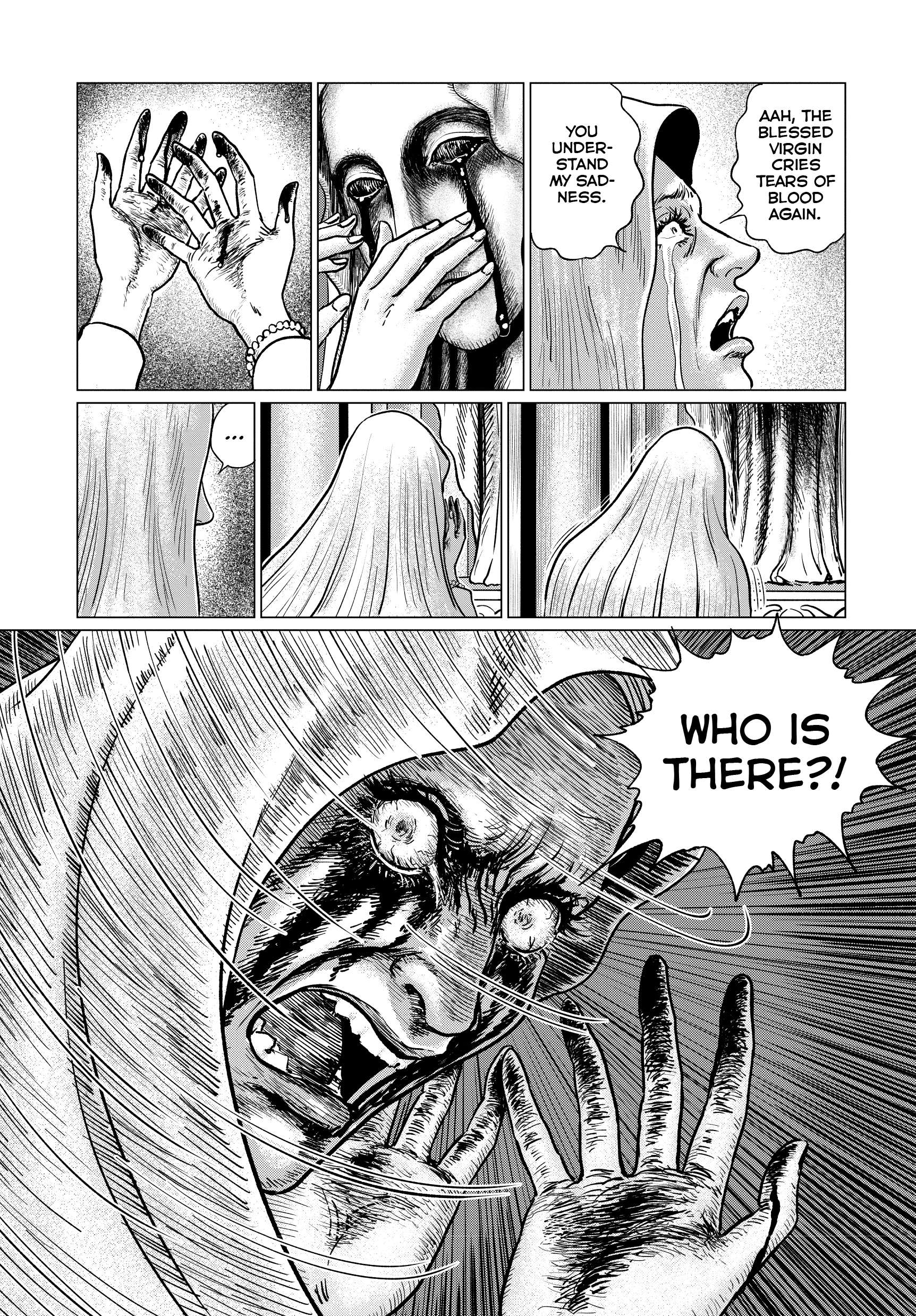
Courtesy of VIZ Media ©JI Inc. /Asahi Shimbun Publications Inc.
It sounds like there was a disconnect between idea and story that you had to cross the same way that there's a disconnect from the characters and their realities in each story.
ITO: [laughs] It's really fun to hear your analysis of my stories, because I don't think about that stuff. Hearing other people talk about my work this way is really fun. Thank you!
Do you still draw with pen and paper, or are you drawing fully digital now?
ITO: I've completely moved on to digital actually, including the storyboard and editing. It's easier because all I have to do is copy and paste: Moving pages, replacing certain graphics is easier with a digital device. Especially when I'm doing a screenshot and stuff, digital is so much easier and [takes] less time.
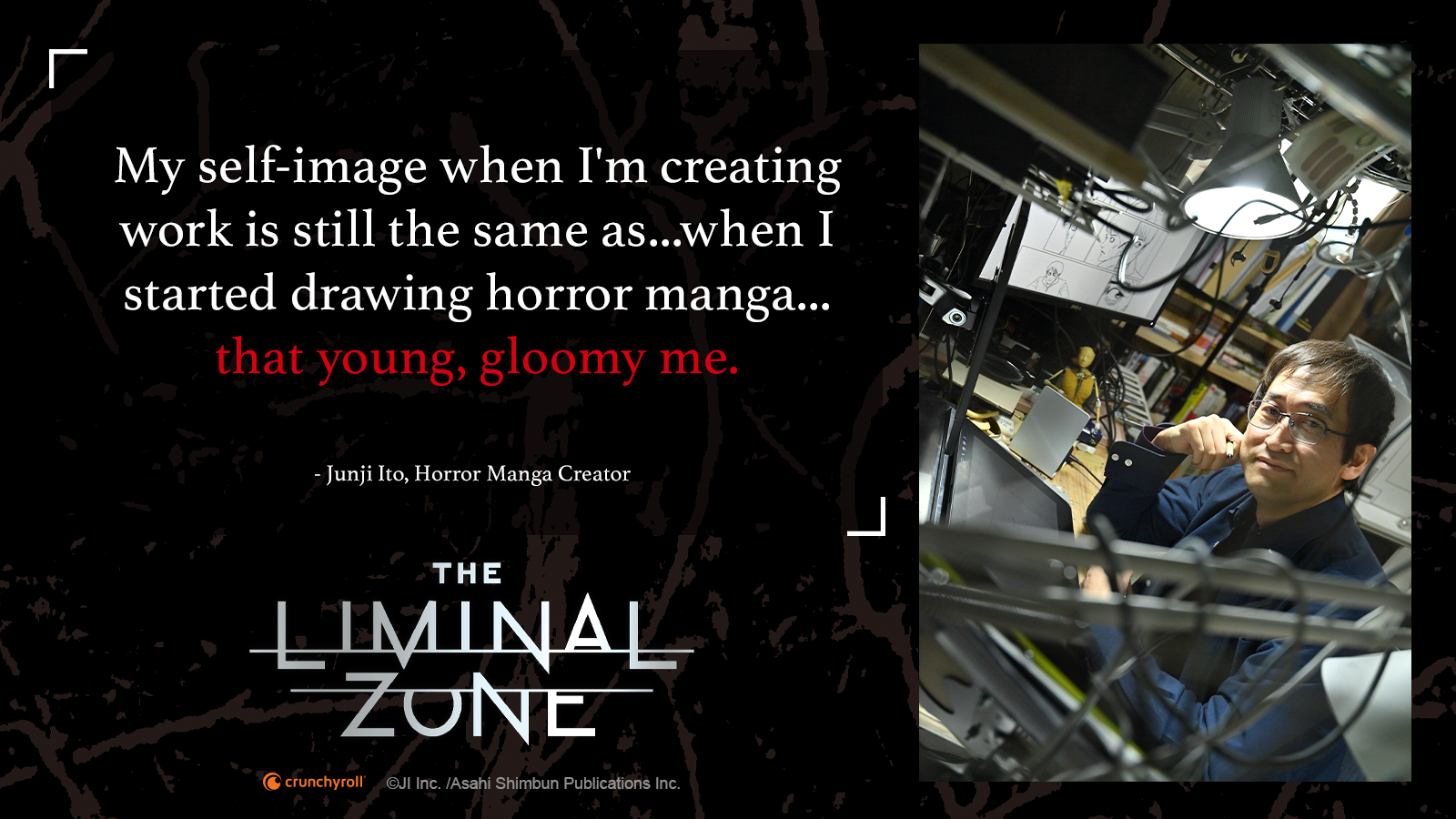
© Tetsuya Higashikawa / Asahi Shimbun Publications Inc.
So from Lovesickness to the Liminal Zone, how do you choose which stories belong together in a collection?
ITO: When I'm creating works, my ultimate goal is to create tankōbon 単行本 booksNote 4. So when I'm doing a series, or one with short stories, I'm ultimately aiming to publish them as tankōbon books in the future. So I don't really think about the theme or which story goes into which book. But when I'm doing a collection of past works, then of course I think about the theme of the titles and maybe similarities between the stories, and that's how I come up with a collection.
So you like to rearrange when you're going back.
ITO: So when I’m doing a new edition—old short stories that were in separate volumes into a new book collection—then yes, I would think about the theme and similar stories. I've also done a bunkobon 文庫本 based on the years when the stories were publishedNote 5. So that's another way of collecting the stories.
[Note: At this point Takashi Kogure, the Assistant Manager of Digital Rights from Asahi Shimbun Publications, offered a comment.]
KOGURE: In Japan, there are lots of different collections based on other collections previously published. But VIZ Media published new collections based on stories between 2011 to 2013. And that's when we went back and thought about the theme to come up with a new edition out of these old stories. So that's what [Ito-sensei] was mentioning, there are so many other collections in Japan that were based on different themes.
Thank you, that helps. Speaking of collections, congratulations on your back-to-back annual Eisner Award wins!
ITO: Thank you so much!
Do you have a special place where you’re keeping these awards…or do you just keep them in a giant pile like a certain hidden room in “Madonna”?
ITO: So the studio I'm using, it actually was an apartment where my family lived, but recently we moved into my wife's parents' house. My studio became bigger and more spacious...I have to clean it up! But I would never treat these trophies like the chunks of salts that appear in “Madonna”. [laughs] These are something very special and precious to me. They're in a clear case on the shelf right now.
I'll probably move them somewhere once I clean up the studio a little bit but yeah, they're very precious to me!
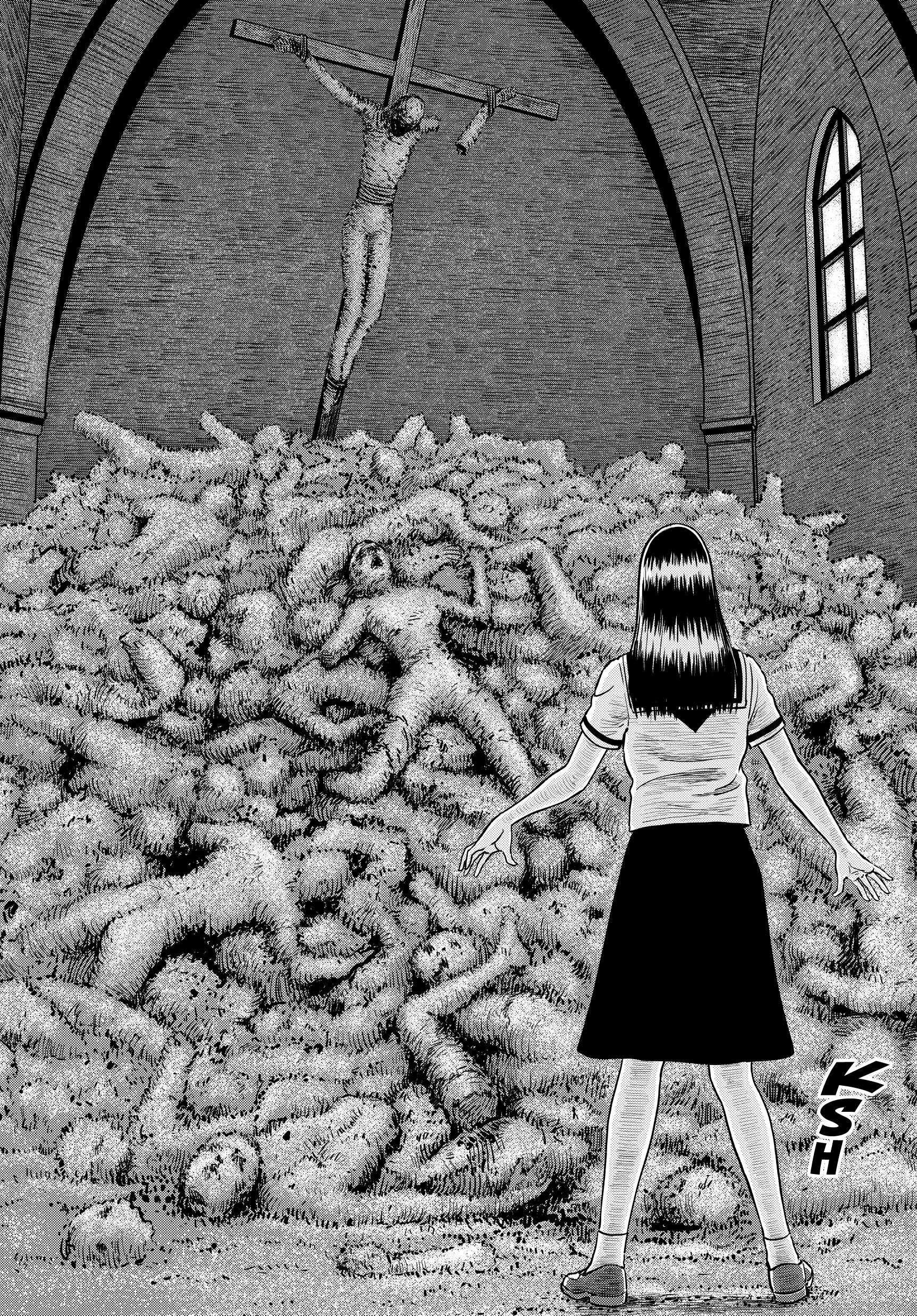
Courtesy of VIZ Media ©JI Inc. /Asahi Shimbun Publications Inc.
As they should be! Does this win feel different than your previous three Eisner wins?
ITO: Back in 2019 I got the [Eisner] award and in 2021 I was awarded in two different departments...and then I won this year. It's overwhelmingly surprising! I couldn't believe it. And that surprise increases every time I receive this award. I was definitely surprised. But I would say that Lovesickness is one of my favorite stories. So the fact that they chose this title makes me very happy!
Okay: fun questions. Are you ready?
ITO: Yes!
You've mentioned being scared of the bathroom as a kid. Is some part of you still afraid?
ITO: [laughs] So this whole house that I used to live in when I was a child—and remember this house is like 80 years old, a really old house, a ruin almost—and back then they didn't have a flushing toilet. So the bathroom toilet was in a sort of separate annex in the backyard. At night I would have to walk down into this sort of basement area, through this alleyway, into the backyard to go to the bathroom. And you know it's dark and dingy...and in the basement hallway there's a storage area entrance—you can imagine how dark that entrance would be. There was no light.
So it was very scary of course, dark and scary. That house is all gone, so of course I'm not scared of the bathroom anymore...but if I had to go to that bathroom again at this age then I'd still be scared of it!
If the bathroom doesn't scare you anymore, what does creep you out these days?
ITO: Top of my head, something that I'm scared of right now...there are a lot of cicadas in Japan. They're loud! But there are dying cicadas on the street, flipped upside-down. I go to check, and with their last breath they're moving and making sounds again...and that's something that I'm scared of right now.
They're so loud, aren't they? They just penetrate your brain.
ITO: Recently, I learned how to tell if the cicada is alive or not. If their legs are open, then they're still alive, and when their legs are curled in like this [gestures] then they're dead.
And you…feel compelled to check every time?
ITO: Exactly! [laughs]
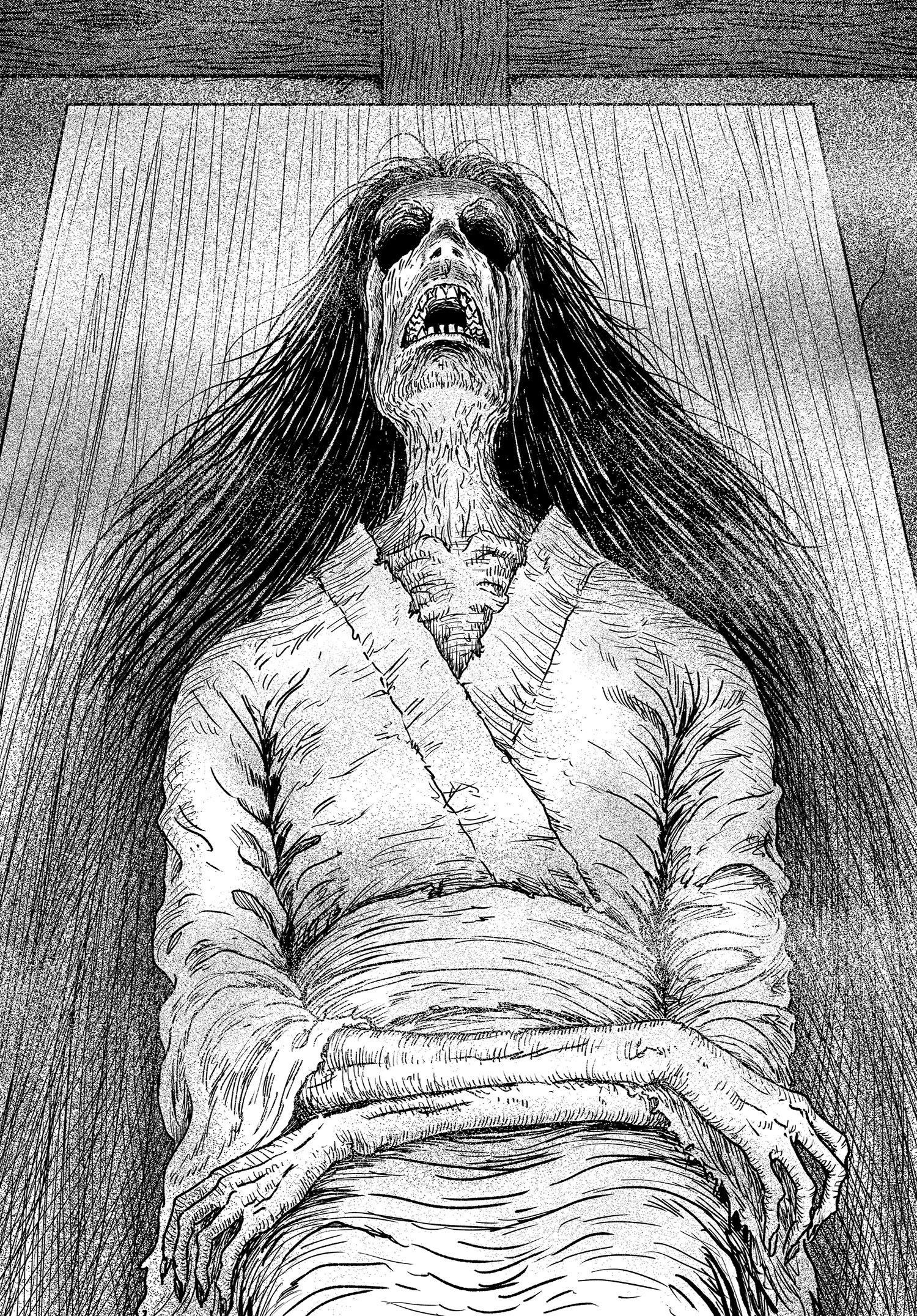
Courtesy of VIZ Media ©JI Inc. /Asahi Shimbun Publications Inc.
Your public personality is so friendly and cheerful, and a stark contrast to your much darker stories. Do you feel a separation between your personality versus the horror in your plots, or do they complement somehow?
ITO: So in public I might look cheerful...I'm not sure if I'm full of energy or not. But when I was young, I used to be much darker and gloomy, you know, that sort of a character. But as I got older, I became more sociable and I learned how to behave amongst people. So naturally I became more cheerful as I got older. But my self-image when I'm creating work is still the same as when I was young, when I started drawing horror manga. So my image, when I think of myself writing and drawing and creating work, that is still that young, gloomy me. So that hasn't changed.
So you see your artist self still as that dark, gloomy child.
ITO: Yeah, perhaps I'm thinking that subconsciously I want to keep that image for myself because I don't want my work to change over time...so maybe unconsciously I'm trying to keep that personality for myself.
Your “artist self” is a literal liminal zone.
ITO: Thank you for that comment! [laughs] If you can think of it that way as a book, as a piece of work, then the Liminal Zone is a success.
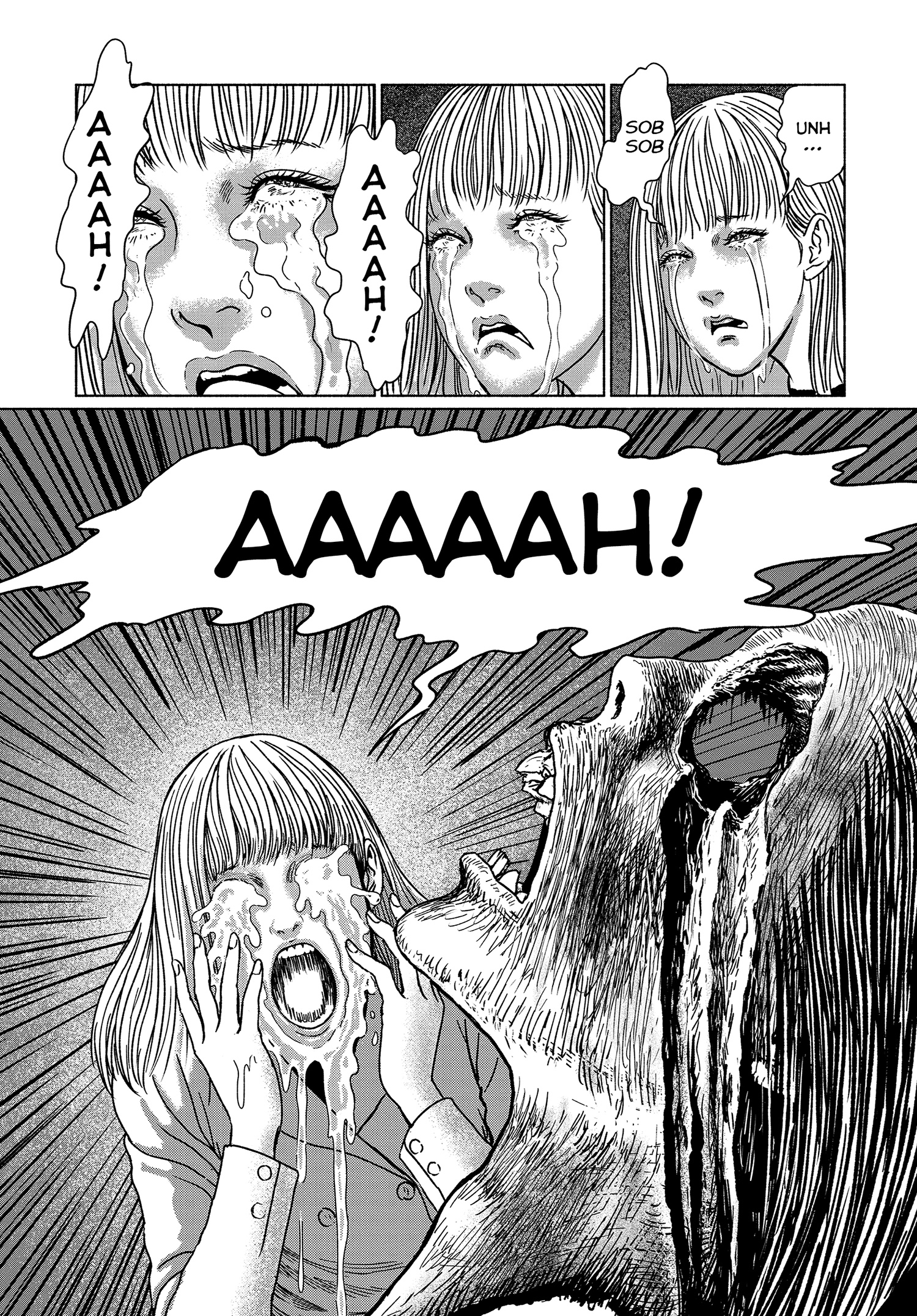
Courtesy of VIZ Media ©JI Inc. /Asahi Shimbun Publications Inc.
One more thing: Happy belated birthday!
ITO: Thank you so much! I'm now 59, and next year, I'm [the] big 60. I don't want to grow old…but I'm feeling that as I grow older, maybe I feel more relaxed and maybe it's easier to let things go, so I hope to enjoy my life.
Is there anything else that you want to add for our readers?
ITO: I'm really appreciative of Crunchyroll readers. Thank you so much for rooting for me and supporting my work all the time. I'm currently working on short stories, so please look forward to it. I'm getting older, but I am willing to resist aging and continue creating, so please look forward to it!
Thank you for taking the time to speak with me, and congratulations again! It's been a true pleasure to talk with you.
ITO: Thank you for having me! I'm looking forward to working with you again in the future.
___________
FOOTNOTES
Note 1: The Japanese title for the Liminal Zone is Genkai Chitai. Jump back to text
Note 2: More on hikikomori here. Jump back to text
Note 3: The short story’s title, “Madonna”, deliberately contrasts the traditional Madonna religious figure against the Japanese characters that make up Ma-do-onna (which together mean “angry witch/demon woman”). Jump back to text
Note 4: Tankōbon are separate published volumes, as opposed to a story first being serialized in a magazine. Jump back to text
Note 5: Bunkōbon are smaller, soft-cover books. Jump back to text
The Liminal Zone is available in English from VIZ Media!
David-Christopher Galhea is the Director of Editorial at Crunchyroll. Twitter: @dch_galhea
Source: Latest in Anime News by Crunchyroll!

Comments
Post a Comment